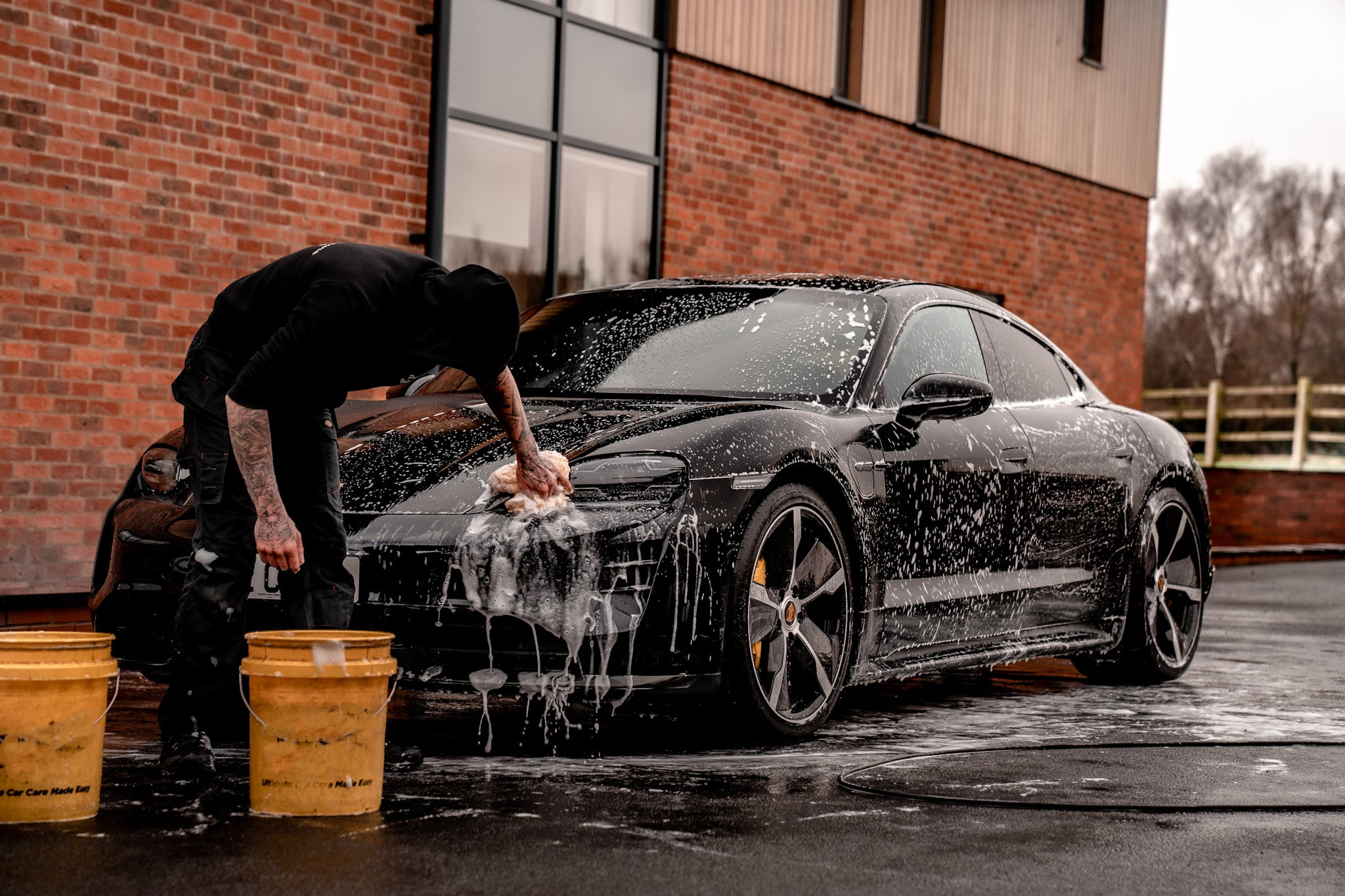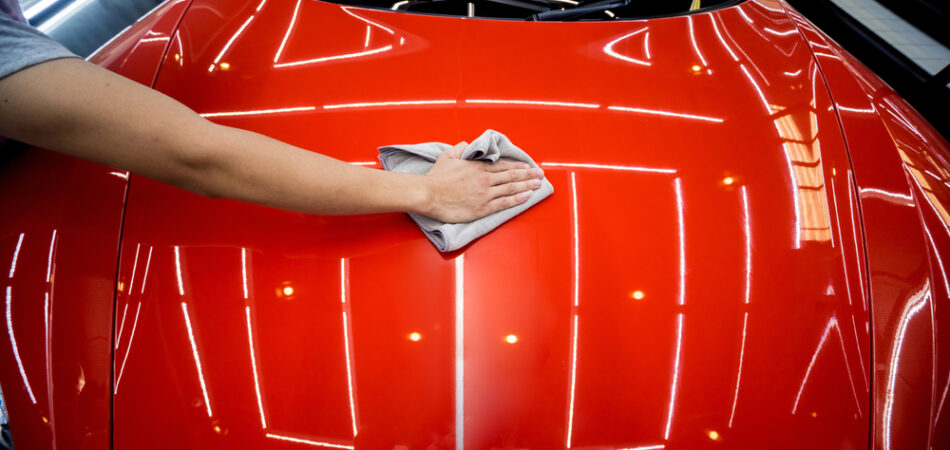Why Select Ceramic Coatings San Jose for Long-Lasting Sparkle
Why Select Ceramic Coatings San Jose for Long-Lasting Sparkle
Blog Article
Unveiling the Scientific Research Behind Ceramic Coatings: Exactly How Does It Work and Why Is It Superior to Conventional Options?
Ceramic finishes have actually been acquiring popularity in different markets for their exceptional efficiency and toughness. The scientific research behind these finishings surpasses simple surface area security, delving right into the intricate chemistry that makes them stand apart from standard choices (ceramic coatings san jose). Comprehending how ceramic finishes job and why they exceed traditional alternatives is essential for those looking for to enhance the longevity and durability of their materials. So, just what sets ceramic layers apart, and just how do they accomplish such amazing results?
The Chemistry of Ceramic Coatings
In understanding ceramic coverings, diving right into the detailed chemistry behind their make-up is necessary for understanding their performance and toughness. Ceramic layers are largely made up of silicon dioxide (SiO2), which develops a solid and protective layer when used to various surfaces. This chemical framework supplies outstanding resistance to heat, chemicals, and corrosion, making ceramic coatings highly sought after for a large range of applications.
The chemistry behind ceramic coverings includes the development of covalent bonds between silicon and oxygen atoms, developing a rigid network that boosts the finishing's durability and resilience. Additionally, the presence of other components such as aluminum, titanium, and zirconium more boosts the finishing's residential properties, using increased solidity and bond to surface areas.
Comprehending the chemical composition of ceramic finishes enables the customization of formulas to suit certain requirements, whether it be for automotive, industrial, or domestic functions. By utilizing the power of chemistry, ceramic finishes proceed to pave the way for premium security and efficiency in numerous sectors.
Benefits of Ceramic Coatings

One more considerable benefit of ceramic coverings is their hydrophobic nature. This residential property causes water to grain up and roll off the covered surface area, lugging dust and contaminants with it. As an outcome, ceramic finishings make cleansing and preserving surface areas much easier and less taxing. Ceramic layers provide boosted gloss and color deepness, offering surfaces a lively and glossy look. Generally, the plethora of benefits supplied by ceramic coverings make them a remarkable choice contrasted to traditional covering approaches.
Just How Ceramic Coatings Bond
Ceramic finishings bond to surface areas via a procedure that involves molecular adhesion and chemical interactions. When a ceramic finish is used to a surface area, it forms a strong bond by chemically adhering to the surface area at a molecular level. This bond is produced with the formation of covalent bonds, which are webpage very strong and long lasting. The ceramic layer's particles pass through the pores of the surface area, producing a tight hold that withstands separation.
In addition, the chemical communications in between the ceramic layer and the surface area additionally improve the bond. ceramic coatings san jose. These interactions enable the ceramic covering to create a seamless and constant layer on the surface, offering superb security and sturdiness. Unlike standard finishings that might rest on the surface area without completely bonding, ceramic layers develop a permanent bond that is resistant to chemicals, UV rays, and rough best site environmental conditions

Basically, the bonding device of ceramic finishings makes certain a long-lasting and reliable safety layer that outperforms conventional finish choices. This superior bond contributes to the toughness, scrape resistance, and long life of ceramic finishings, making them a preferred choice for numerous applications.
Sturdiness of Ceramic Coatings
The extraordinary durability of ceramic finishes originates from their durable molecular bond and chemical interactions with surfaces, guaranteeing a sturdy safety layer that exceeds typical finishing alternatives. Once used, ceramic coatings create a solid bond with the substrate, creating a resilient barrier versus various ecological stress factors such as UV radiation, chemicals, and abrasions. This bond is so secure that it can stand up to the roughness of day-to-day usage without deteriorating or weakening swiftly.
Unlike standard coverings that may weaken over time, ceramic coverings maintain their stability for an extensive duration, offering resilient security for the underlying surface. Generally, the exceptional longevity of ceramic finishes makes them a remarkable selection for securing a large range of surfaces in numerous applications.
Ceramic Coatings Vs. Traditional Alternatives
In visite site contrast to traditional finish techniques, ceramic layers supply an unique mix of sturdiness and safety abilities that establish them apart in different surface security applications. Conventional choices such as wax or sealers offer a short-lived layer of security that can disappear promptly, calling for constant reapplication. On the other hand, ceramic coverings create a solid bond with the surface area, developing a semi-permanent or long-term barrier that is highly resistant to abrasion, chemicals, UV rays, and extreme temperature levels.
Additionally, ceramic finishes supply superior hydrophobic residential or commercial properties compared to conventional coverings. The hydrophobic nature of ceramic layers creates water to bead up and roll off the surface area, lugging dirt and pollutants with it. This self-cleaning impact helps to maintain the surface area's sanitation and gloss for extended durations, reducing the need for constant upkeep.
Furthermore, ceramic finishings have a thicker layer contrasted to typical choices, giving enhanced scratch resistance and defense versus small influences. This durability makes certain long-lasting performance and helps maintain the visual charm of the treated surface area for an extended period.
Verdict
In verdict, the science behind ceramic layers lies in their chemical composition and bonding homes, making them above conventional options. The benefits of ceramic finishes include increased toughness and protection for surface areas. By comprehending just how ceramic coverings job and their benefits over standard choices, one can make informed decisions when thinking about layer options for numerous applications.
Unlike typical coatings that may rest on the surface area without fully bonding, ceramic finishes produce a permanent bond that is immune to chemicals, UV rays, and extreme environmental conditions.
The extraordinary long life of ceramic finishings stems from their durable molecular attachment and chemical communications with surface areas, making sure a durable safety layer that goes beyond standard finishing alternatives.Unlike standard coatings that may deteriorate over time, ceramic finishings keep their honesty for a prolonged period, supplying lasting security for the underlying surface area.In contrast to conventional layer methods, ceramic finishings provide an unique blend of longevity and protective abilities that set them apart in various surface defense applications. By comprehending exactly how ceramic finishes work and their advantages over typical choices, one can make informed choices when considering coating choices for different applications.
Report this page